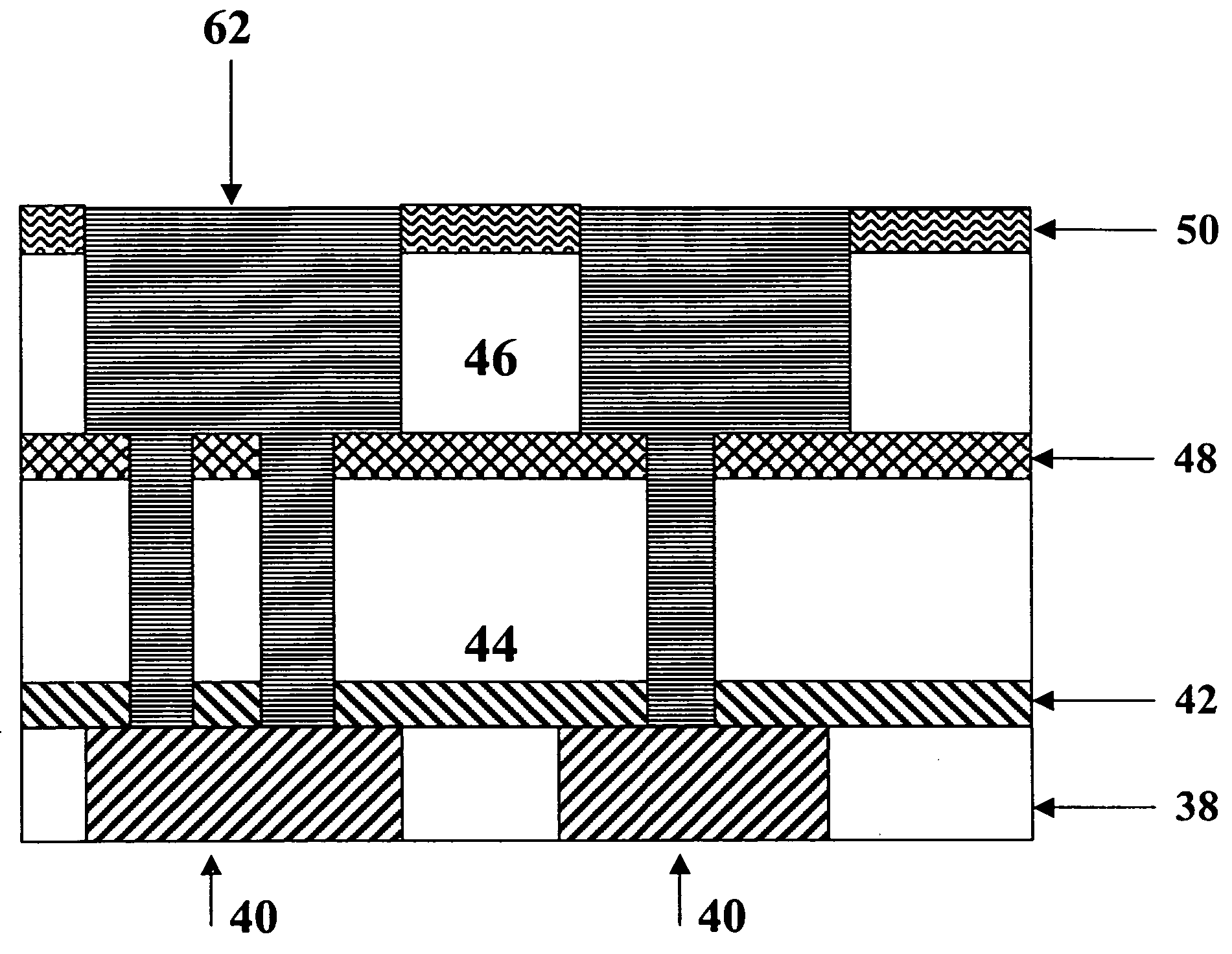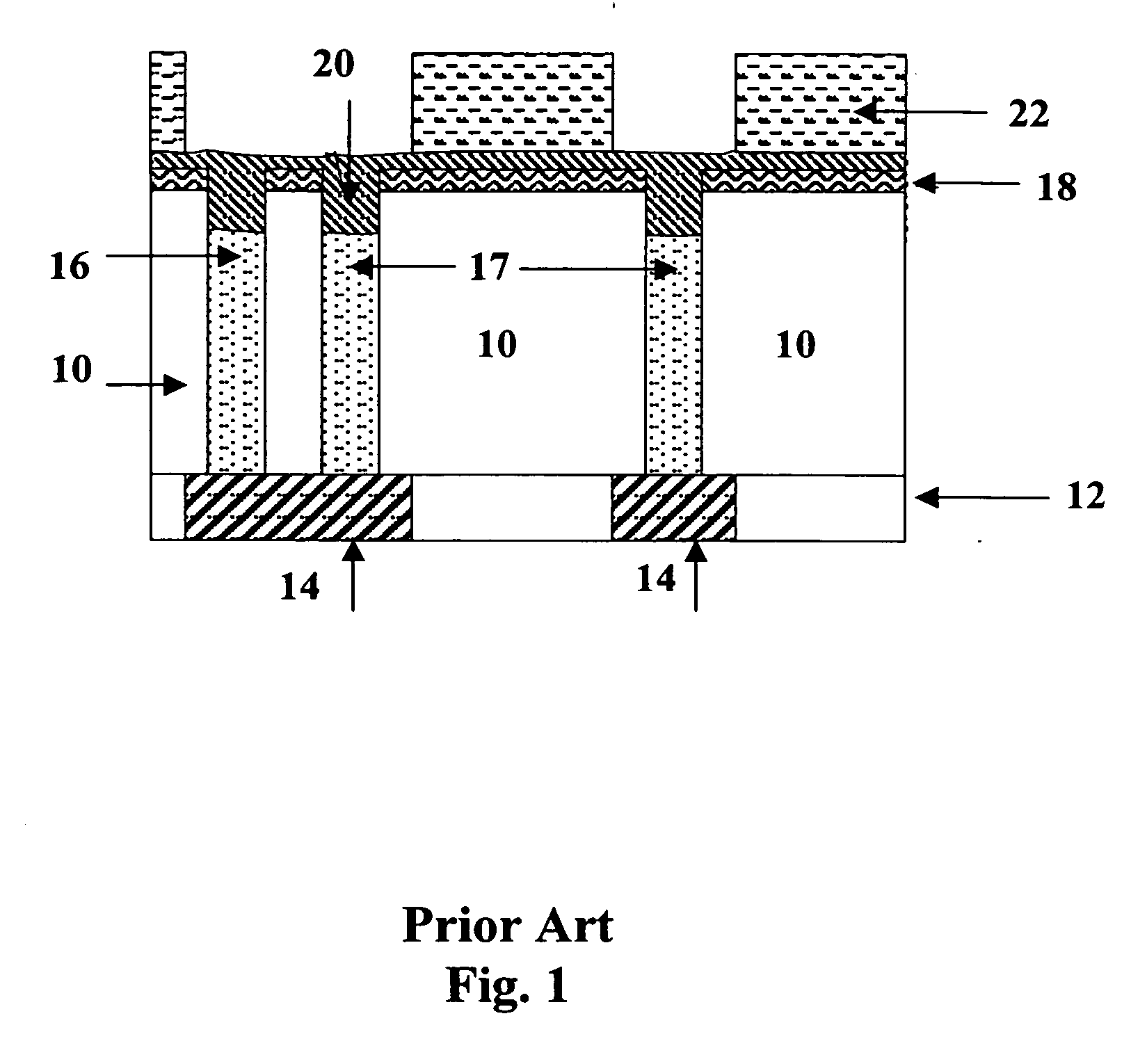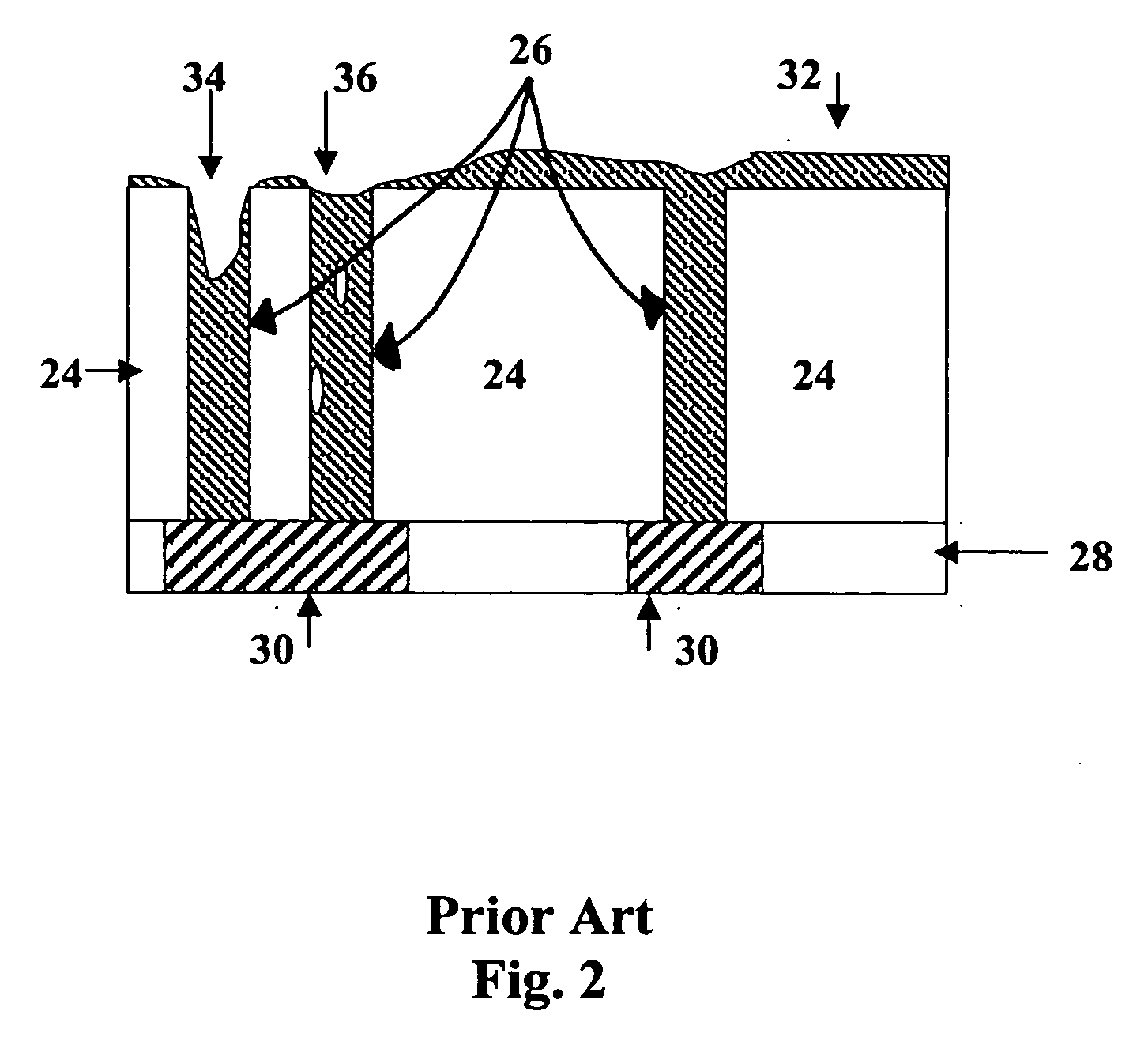Method of filling structures for forming via-first dual damascene interconnects
a technology of filling structure and interconnection, applied in the direction of basic electric elements, electrical apparatus, semiconductor devices, etc., can solve the problems of reducing manufacturing complexity and cost, more complex integrated circuit devices, and increasing the difficulty of patterning and etching processes, so as to achieve low bias
- Summary
- Abstract
- Description
- Claims
- Application Information
AI Technical Summary
Benefits of technology
Problems solved by technology
Method used
Image
Examples
example 1
Full-Fill Application Using PGMEA as a Solvent
[0039] DUV52N (available from Brewer Science Inc., Rolla, Mo.) was coated on a wafer with etched via arrays having various pitches and diameters. The coated wafer was then baked at 140° C. for 130 seconds, partially curing the layer of DUV52N. The wafer was then cooled at 21° C. for 30 seconds. PGMEA was puddled onto the wafer for 35 seconds, and the wafer was then spun at 2,000 rpm for 30 seconds to remove the solvent. A final bake at 205° C. for 60 seconds completely cured the layer of DUV52N. An SEM photograph (FIG. 4) revealed that the thickness of layer of DUV52N before the solvent etch step was 120 nm in a 250-nm diameter, 1:1 via array, and 180 nm thick in a 250-nm isolated pitch via array, yielding a bias of 60 nm. After the solvent etch step, the thickness was reduced to 68 nm in the dense array, and 125 nm in the isolated array, resulting in a bias of 57 nm.
example 2
Partial-Fill Application Using PGME as a Solvent
[0040] DUV52N was coated onto a via array and baked at 160° C. for 60 seconds to partially cure the bottom anti-reflective coating layer. The wafer was then cooled at 21° C. for 30 seconds. PGME was puddled onto the wafer for 15 seconds. The wafer was then spun at 2,000 rpm for 30 seconds to remove the solvent, and then underwent a final curing step by baking at 205° C. for 60 seconds. Before the solvent etch step, the thickness of DUV52N was 174 nm in the dense via array and 190 nm in the isolated via array, reflecting a bias of 16 nm. After the solvent etch-back and final cure steps, the bottom anti-reflective coating was found only at the bottom of the vias. The thickness of the bottom anti-reflective coating remaining in the vias was 52 nm in the dense via array, and 120 nm in the isolated via array, a bias of 78 nm.
example 3
Partial-Fill Application Using PGME as a Solvent
[0041] DUV52N was coated onto a via array and baked at 160° C. for 60 seconds. The wafer was then cooled at 21° C. for 30 seconds. PGME was puddled onto the wafer for 45 seconds. The wafer was then spun at 2,000 rpm for 30 seconds to remove the solvent, and underwent a final cure step by baking at 205° C. for 60 seconds. Before solvent etch, the thickness of the DUV52N was 174 nm in the dense via array, and 190 nm in isolated via array, a bias of 16 nm. After the solvent etch-back and final cure steps, the bottom anti-reflective coating was found only at the bottom of the vias at a thickness of 30 nm in the dense via array, and 90 nm in the isolated via array. This resulted in a bias of 60 nm.
PUM
| Property | Measurement | Unit |
|---|---|---|
| time period | aaaaa | aaaaa |
| temperature | aaaaa | aaaaa |
| time period | aaaaa | aaaaa |
Abstract
Description
Claims
Application Information
 Login to View More
Login to View More - R&D
- Intellectual Property
- Life Sciences
- Materials
- Tech Scout
- Unparalleled Data Quality
- Higher Quality Content
- 60% Fewer Hallucinations
Browse by: Latest US Patents, China's latest patents, Technical Efficacy Thesaurus, Application Domain, Technology Topic, Popular Technical Reports.
© 2025 PatSnap. All rights reserved.Legal|Privacy policy|Modern Slavery Act Transparency Statement|Sitemap|About US| Contact US: help@patsnap.com



